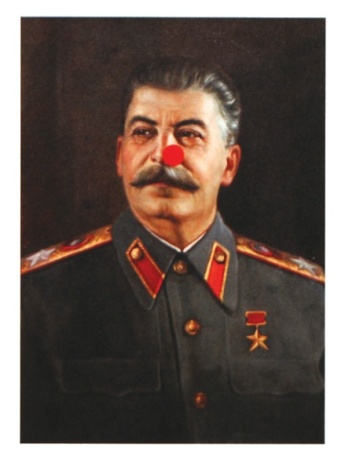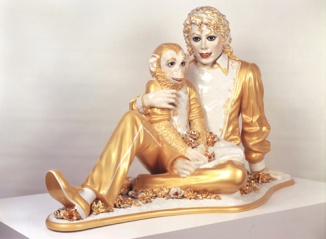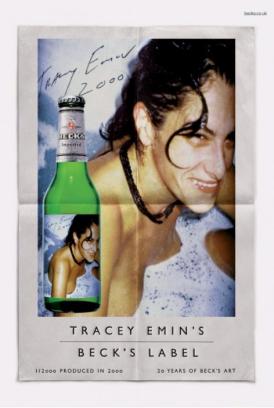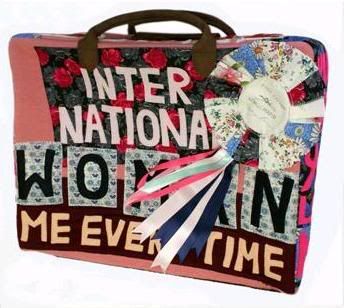Contemporary art pieces can sell for unbelievably high amounts although they do not always reflect objective quality. Few of the top artist even do not do their works: Jeff Koons admits that he is not involved in the production as of his lack of skills, Damien Hirst has staff that he only instructs. In the case of Andy Warhol, who did not do many of his works the authenticity is estimated by finding out if the artists, at least, saw the work. If so, the piece is tens of millions, and if not it is nearly worthless. How does the artist establish the brand then? It is possible with connections with dealers, collectors, auction houses etc. which ensures artists credibility. As follows, collectors buy not only artist they recognise but the artwork that has been owned or handled by those persons or establishments. An auction professional once said, “Never underestimate how insecure buyers are about contemporary art, and how much they always need reassurance.”
Artists generate high prices by branding themselves in many ways: Jeff Koons by being controversial, Tracey Emin with her ‘bad girl’ image, Damien Hirst by the nature of his art itself or Andy Warhol becoming celebrity. All of them established successful brands with their names and recognisable image in popular culture. Also, the artist today are ‘idea people’ rather that art makers, as many of them choose to work with the team or technicians as well as produces art that is duplicable.
Damien Hirst is not only an artist, but also a curator, collector, and entrepreneur: he opened his restaurant (shut down already) and a gallery. Also, he has a company, Other Criteria, that licenses his imagery, creates products, and sells them on the Web. Although Hirst remains loyal to his two longtime galleries, White Cube and Gagosian, his market power allows him to show when he wishes, without a formal contract and on his own terms. By the age of forty, he has been claimed to be worth £100 million. To compare, Hirst’s value is is more than Picasso, Andy Warhol, and Salvador Dali values combined at the same age. Does Hirst command power and high prices because he is good, or because he is branded?
He works with the team of assistants and is never responsible for a whole work of art, only adds a few brush strokes and his signature. He has said: ‘I like the idea of a factory to produce work, which separates the work from the ideas, but I wouldn’t like a factory to produce the ideas.’ The most absurd story, proving Hirst’s branding is associated with the Sunday Times writer and restaurant critic, A.A.Gill. He wanted to sell old Joseph Stalin painting, made by the unknown artist. He had offered it to Christie’s in 2007 but received a reply that they would not deal with Hitler or Stalin. Gill called then Damien Hirst to paint a red nose on Stalin, and signed it. With the signature, Christie’s accepted it and estimated value on £8–12,000. Finally, it was sold for £140,000.

A huge part if his marketing strategy is represented by his titles, that are not obvious and lead to discussion. For example, as Don Thompson (2008) says: “If the shark were just called Shark, the viewer might well say, ‘Yes, it certainly is a shark,’ and move on. Calling it The Physical Impossibility of Death in the Mind of Someone Living forces viewers to create a meaning. The title produced as much discussion as the work.” A value of any work of art is its scarcity, assumption that it is one of a kind and will never be duplicated, for forms like prints the series number dictates the price (smaller number -> higher the price). However, Hirst has made another shark. He opened his first exhibition in Latin America Galeria Hilario Galguera in Mexico City in 2006. One of the exhibits was another tiger shark in formaldehyde. It was sold before the show opened, for $4 million (the first one was sold for $12) to the Leeum Samsung Museum in Seoul, Korea. (Thompson, 2008)
Another successfully branded artist is Andy Warhol. His strategy was to be celebrity artist. It may seem strange, however, every cultural section has its superstars: musicians, actors, sportsmen. Why should art be different? Art has elite character, however, Andy Warhol redefined this old fashioned concept. The whole idea has begun in 1960s in New York, where Jasper Johns, James Rosenquist and Roy Lichtenstein were promoted by dealers Leo Castelli, Betty Parsons and Charles Egan. Andy Warhol became later much more successful than them.
His works reflect the American culture and its commodification, however the main product for all those artworks always was ‘Andy’. His first big exhibition was The Campbell’s Soup Cans, as it got first media publications. Many of the critics say that it was his biggest contribution to contemporary art. Same as Hirst, most of Warhol’s works was produced by assistants and technicians, and The Factory he created suggest that artworks can be created same as commercial products on assembly line. The Authentication Board judges the value of Warhol’s work by estimating if he at least saw the artwork – not whether he ever touched it. The ‘presence of the author’ adds value and authenticity and the price grows when it is confirmed that Warhol approved it on its way to his dealer. The practice of mass production blurred the idea of authorship. After his death, the fame had grown and today his brand is the second most often traded after Picasso. (Thompson, 2008) The evidence of Warhol’s brand triumph can be success of his brother’s exhibition, who had never dealt with art himself. He managed to sell posters of a can of Heinz vegetarian beans for $550 with signature ‘Andy Warhol’s brother Paul’. He had created his signature and made paintings by dipping chicken feet, sold for $5,500.
Jeff Koons is the next artist that is a brand legend. He took artist self-marketing to a new level. He gained marketing and promotion experience working with selling memberships at MoMA, as well as being Wall Street commodities broker. Same as Warhol and Hirst his work is created by technicians, under his supervision. His Michael Jackson and Bubbles sculpture was sold for $5.6 million, at the time a record auction price for any living sculptor. He is admired by dealers as he has talent in reaching the market, auction houses want him as his pieces attract media.

The most recognizable living British artist is Tracey Emin, who promoted herself as ‘bad girl’. Her works include confessions and elements of personal life, as My Bed or Everyone I Have Ever Slept With, a tent embroidered with names of her past lovers. She appeared drunk in interviews, became the face of Bombay Gin, with the caption ‘Bad Girls Like Bombay Gin’ and pose nude for Beck’s Beer. Not many contemporary artists can be identified by their appearance. Her endorsement of commercial products emphasizes the artist’s brand. Also, she collaborated with Longchamp and created a special-edition bag.



To conclude, recognised artist name has the same value as the brand we trust. There is some sort of concept in the input of artist name only – a spot painted and signed by Hirst has great value. Mentioned above artists create publicity and brought to gallery people that would not see contemporary art otherwise. Hirst, Warhol, Koons and Emin are great examples of ‘You are nobody in contemporary art until somebody brands you’. Their personas are present in media and it creates demand for their products.
http://www.artnews.com/2007/10/01/the-branding-of-damien-hirst/
https://www.prophet.com/blog/aakeronbrands/242-what-brands-can-learn-from-damien-hirst
Thompson, D. (2008) The $12 million stuffed shark: The curious economics of contemporary art and auction houses. London: Aurum Press.










